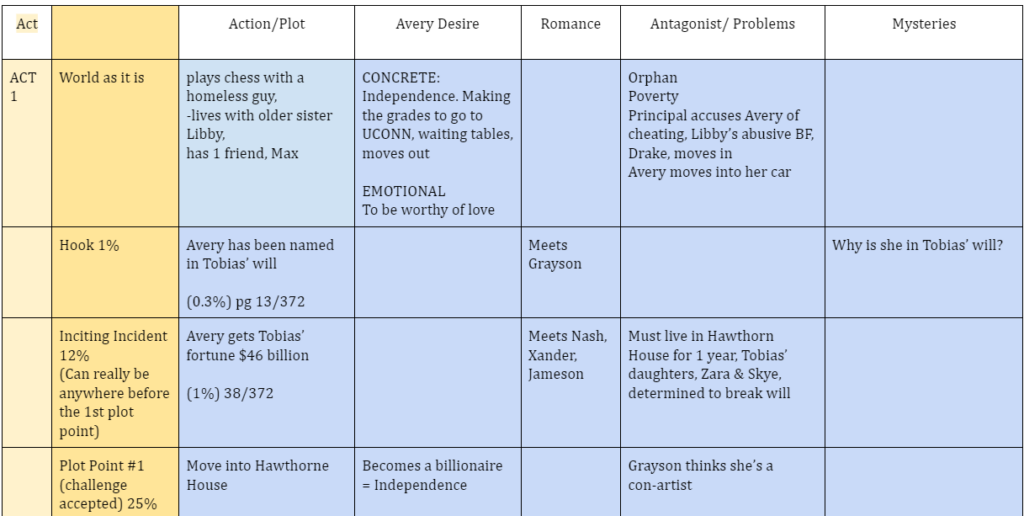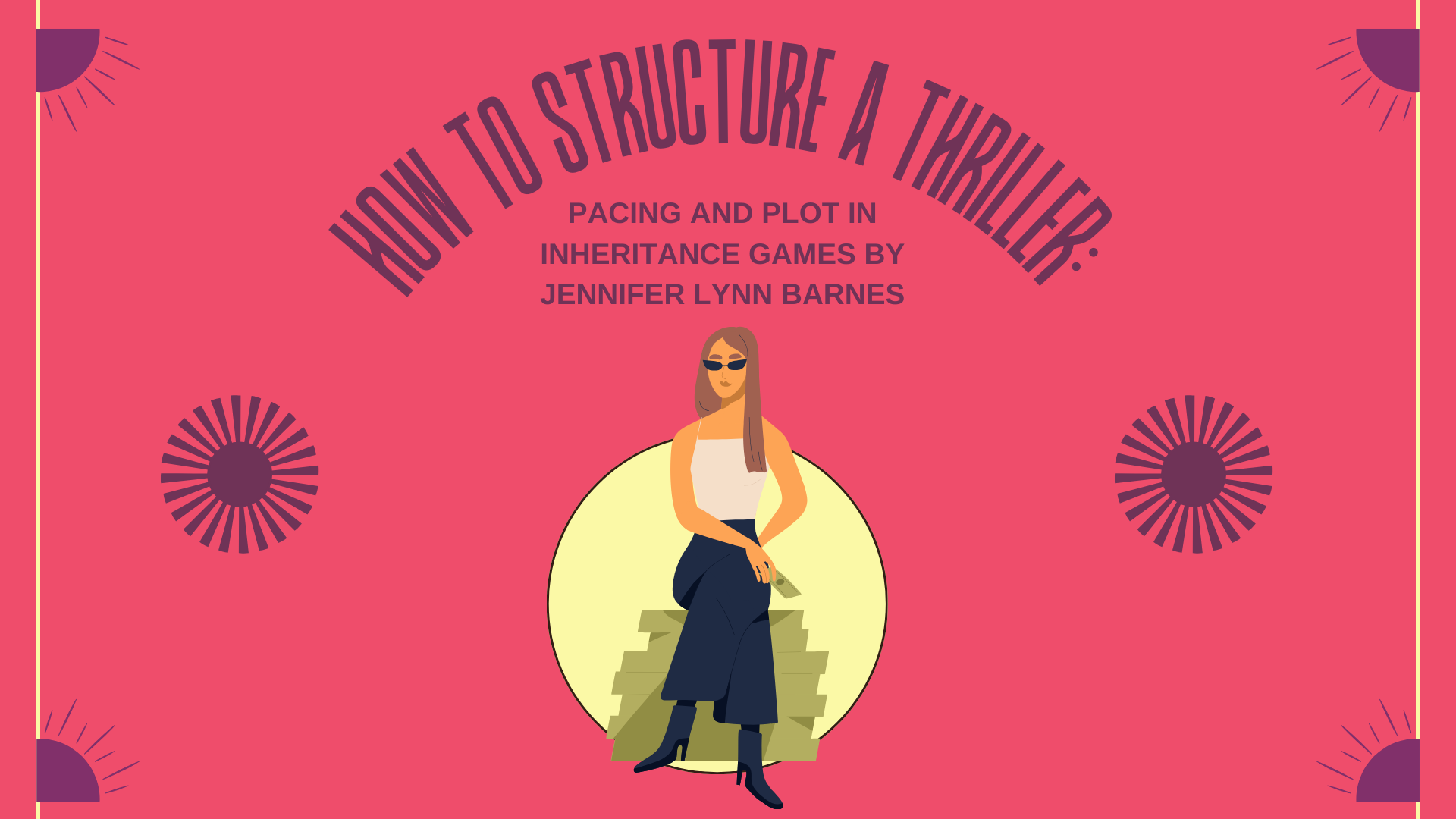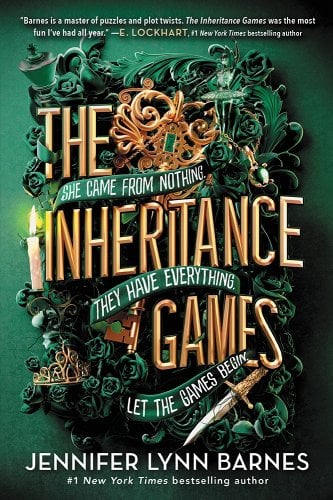craft post by Erin Nuttall
There are a lot of things that make up a good story. Lately, I’ve been thinking a lot about pacing–how to craft a book that keeps readers turning pages. As you know, here at KidLit Craft we like to dissect aspects of books to help us improve our own writing. To look at pacing, I took The Inheritance Games, by Jennifer Lynn Barnes, as my mentor text, the first book in a popular YA Thriller series.
The Inheritance Games features Avery Grambs, a normal girl who unexpectedly inherits 46 billion dollars. The story has key attributes that engage readers: excessive wealth, a love triangle with hottie brothers, and a twisty mystery. I knew that it was fast-paced, but what exactly did that mean? In order to better understand the story’s pacing I decided to deconstruct it.
Backstory? Not so much.
First, the backstory is minimal. There’s no excess information to slow the plot down–especially in the beginning. The important facts of Avery’s world are set up quickly and concisely in the first few pages, setting a race-car pace, barely giving the reader time to buckle up. Any other backstory is parsed out through the rest of the story. In fact, both Avery’s backstory and that of the Hawthorne brothers is used to help build the mysteries, adding tension to story elements that can sometimes stall the pace.
Yes to Short Chapters
Second, the chapters are very short. Most fall in the 3.5-4 page length with some as short as 1.75 pages. The longest–6 pages. At about 250 words per page that averages less than 1,000 words per chapter. The last sentence of each is nearly always a kicker–or a sentence that sets up the next problem and “kicks” the reader into the next chapter. The combination of kickers and short chapters pushes the reader to want to find out what will happen next.
Solve Some Mysteries Fast
Third, I went through the plot to see how the problems and mysteries are set up. Avery starts facing problems on page 3 and they continue stacking up. Some are solved relatively quickly while others take longer, but there are always multiple problems for Avery to work through.
Much like the stockpiling problems, there are many mysteries: an overarching mystery, smaller pieces of the overarching mystery, and some small mysteries of their own. Having all these mysteries gives the readers a lot to wonder about which helps keep them engaged.
What also keeps readers engaged is the fact that solutions to the more minor mysteries are given throughout the story. These solutions are a promise to the reader that they will get answers to the bigger mysteries.
For example, the Hook–the idea that initially engages the reader in the story–shows up a short 13 pages into the story–and is the first, and overarching, mystery. Why is Avery an heir in Tobias Hawthorne’s will? This mystery takes the entire book to resolve, while discovering the answer to the mystery of which of the hundreds of keys Avery is given actually opens the door to her new home, Hawthorne House, is resolved within a few pages. Having mysteries of different lengths and importance gives variety and adds interest.
Plot Graph to See Pacing
Finally, I went through the book and created a plot graph (sometimes called a beat sheet). You can find many different plot graphs/beat sheets online. I used a graph that Anne-Marie and I created several years ago to help us get a handle on our own stories and plots. I tweaked it a little to better serve this particular story. (Full credit due to plot gurus K.M. Weiland and David Macinnis Gill whose work we used to help us create a graph suited to our own needs.)
A plot graph is helpful, especially to those of us who are visual learners, as you can see in a glance the pacing of the story, the key scenes, and make sure ideas, characters, mysteries, etc. are spaced and balanced throughout the story. Please note that I did not fill out all of the squares in the graph. Not every story does, or should, have every detail. And, as you use plot graphs for your writing feel free to alter and fill out the graphs based on what works best for you.

Check out the whole graph here.
Now it’s YOUR turn!
In short, core characteristics of the fast-paced The Inheritance Games are 1) it’s fast off the mark without excess backstory weighing them down, 2) short chapters with kickers, 3) multiplying problems and mysteries of differing weight and solution rates, and 4) plot points are spaced and paced to move the reader through the story.
If you’re writing a fast-paced story, consider these four elements.
Find a blank plot graph HERE to map out your story.
Find the author on social media
Check out these posts on pacing, tension, and mysteries!
Erin Nuttall holds an MFA in Writing for Children and Young Adults from Vermont College of Fine Arts and is an active member of SCBWI and ALAN. She lives outside of Chicago with her family where she writes stories for middle grade and young adult readers that offer a humorous take on friendship, identity, feminism, and romance.



COMMENTs:
0